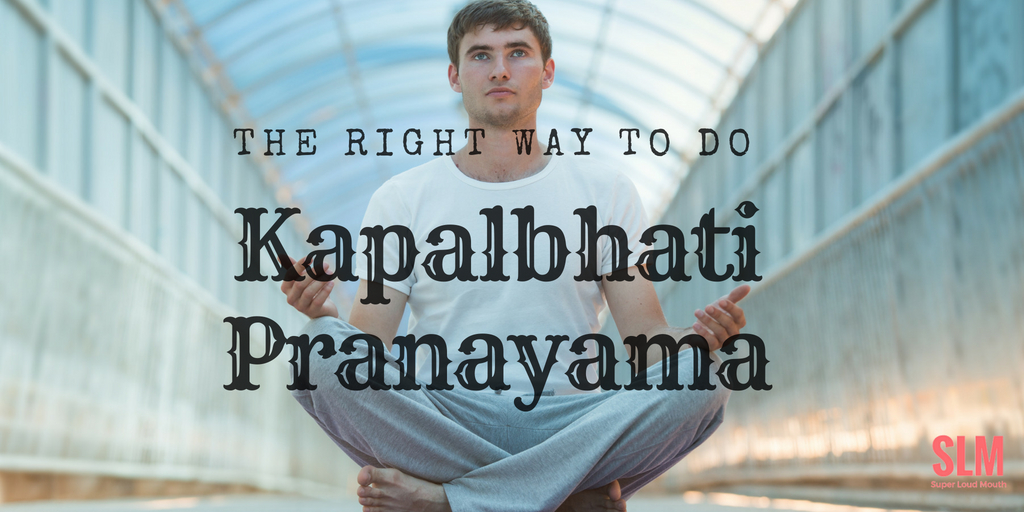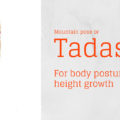Kapalbhati Pranayama and its health benefits
Want to get rid of stress, anxiety and overthinking?
Here you go! Kapalbhati pranayama is one amongst the five yogic breathing exercises to purify your skull.
Let us get deep into the steps and benefits with these natural stress buster breathing exercises.
Pranayama exercises are devised to gain a healthy body and mind. It’s referred to as ” control of breath” which means a controlled breathing while inhaling, exhaling and retention of breath. The word Pranayama is originated from two Sanskrit words Prana which means life or the energy responsible for life and Ayama means control over life. [1]
Have you ever tried any breathing exercises?
Breathing exercises are a yogic discipline followed from archaic times. From those ancient times, yogic breathing exercises are religiously used for the impeccable properties they provide to our body.
Deep breathing exercises have innumerable benefits like it slows down your heart rate, reduces anxiety, cures many health problems, activates certain body processes and detoxifies the body and mind.[2] [3] Furthermore, rapid or deep breathing exercises activates nerves, heart and also the brain. [4]
So, just take a deep breathe and calm down.
There are many breathing exercises in yoga and Kapalbhati pranayama is one amongst them.
What is kapalbhati pranayama?
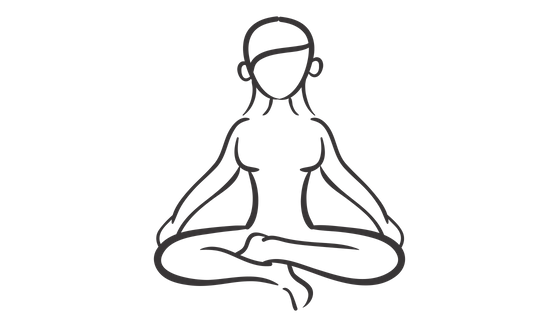
Kapalbhati pranayama is also a Sanskrit word which means skull shining breathing technique. ‘Kapal’ means skull, ‘Bhati’ is shining and ‘Pranayama means breathing technique. So, kapalbhati pranayama exercise is nothing but the purification of the skull. [5]
Kapalbati pranayama exercise will make you get rid of ailments like anxiety, stress, psychological and mental disorders. This exercise also keeps the mind and soul positive as well as healthy. In fact, kapalbhati pranayama in the yogic system means ” body cleansing exercises” because it cleanses respiratory systems by detoxifying, rejuvenating and refreshing the body as well as the mind.
This exercise mainly concentrates on organs in and under the skull like the brain, small brain, and head as all these organs are connected to back of the nose.
Kapalbhati pranayama is a simple exercise and needs minimal efforts to accomplish.
This kapalbhati technique involves short, fast and strong inhalations and exhalations to flush out toxic air from your body. The inhalation or ‘Puraka’ is a normal breath while the exhalation or ‘Rechaka’ is rapid and forceful breathe. Breath retention or ‘Kumbhaka’ is not involved in kapalbhati.
Kapalbhati is one of the Shatkarma or Shatkriya technique i.e., the cleaning exercises which involves only deep and rapid inhalations & exhalations.
If done correctly, kapalbhati pranayama keeps your mind, body and soul healthy. [6] Regular practice of this exercise will completely detoxify and prevents the entry of harmful toxins into the body.
Types of Kapalbhati pranayama
Kapalbhati Pranayama breathing exercises are in three different forms depending upon the process,
- Vatakrama Kapalbhati
- Vyutkrama Kapalbhati
- Sheetkrama Kapalbhati
In Vatakrama kapalbhati a process of Bhastrika is involved. Here exhalation is active while inhalation is passive. In this technique inhalation or ‘Puraka’ and exhalation or ‘Rechaka’ are done but the breathe retention is not done. That said, inhalations are normal besides exhalations are rapid and forceful.
Vyutkrama kapalbhati technique is to sniff water through nostrils and spitting out the water from the mouth which is similar to Jala neti.
Sheetkrama kapalbhati is the reverse process of Vyutkrama. That means water is taken through the mouth and expelled through nostrils of the nose.
The science behind kapalbhati pranayama
Before trying out these exercises we need to know few basics about the ‘process of breathing’. These breathing exercises may seem quite easier but actually, a lot of processes is involved to accomplish the task with fruitful results.
Is kapalbhati pranayama a hard job to perform?
If you’re not following the basic criterions of breathing you may fail and get attacked by some health issues. So, be very cautious while practising these yogic exercises.
The breathing techniques primarily incorporate two activities which are inhaling and exhaling. In the studies of yoga, inhaling is called “Puraka” and exhaling is “Rechaka“. Of course, these two basic processes are done right from our birth to death. But doing them intensely with rapid, strong and deep breathes is what the yogic breathing techniques are all about.
The state when breathe retention is taken place is called “Kumbhaka“. This halt after inhaling or Puraka is called “Antara Kumbhaka”, after exhaling or Rechaka is called “Bahya Kumbhaka” and minimal breathing is named as “Kevala Kumbhaka” in yogic shastras. [7]
The process of breathing is pigeonholed into three parts according to the speed of breathing. [8]
- The normal breathing which is done without any efforts
- Deep breathing which is a prolonged breath caused by slowing down of breathing
- The quick breathing which is caused by an increase in the speed of breathing
When we consider the normal breathing, inhalation is an active process and exhalation is passive. Whereas in kapalbhati pranayama its the reverse process. Here inhalation is a passive one while exhalation is an active process. [9]
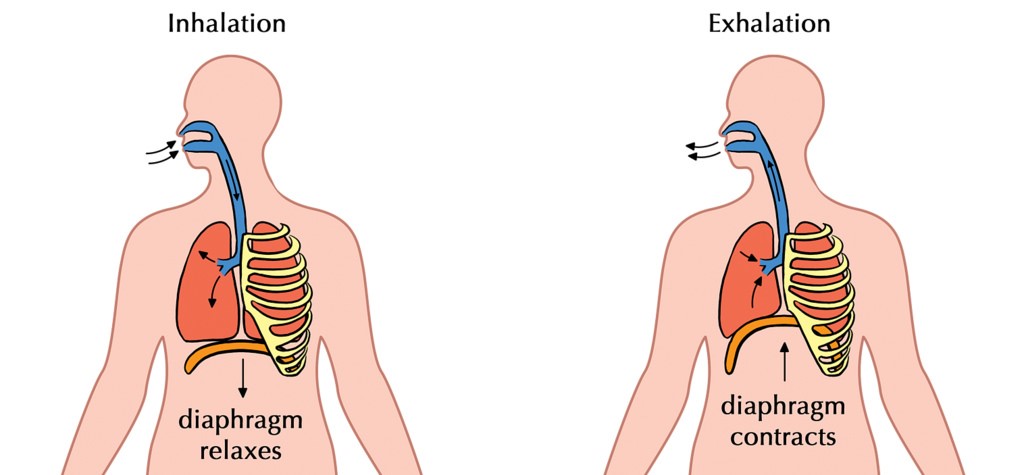
How kapalbhati pranayama works?
In Kapalbhati pranayama during the process of exhalation, air is forcefully exhaled by the abdominal muscles and the diaphragm. Then the diaphragm expels the air when abdominal muscles come in contact with the diaphragm. In contrast, during normal inhalations, the lungs are filled with the inhaled breathe. Throughout the time of inhalation, breathing must be carried in a normal way in distinction to exhalation. Most importantly, they should be no intervals between the two respiration processes i.e., inhalation and exhalation.
It’s quite comprehensive to learn all the first principles or fundamentals about yogic exercises. So, an instructor is always mandatory. Although I know, that there are not many institutions who preach yoga sessions. Acknowledging that you can start reading a host of books, articles and gradually create an awareness over yogic exercises.
How to do kapalbhati pranayama
Here are the simple steps associated with kapalbhati pranayama,
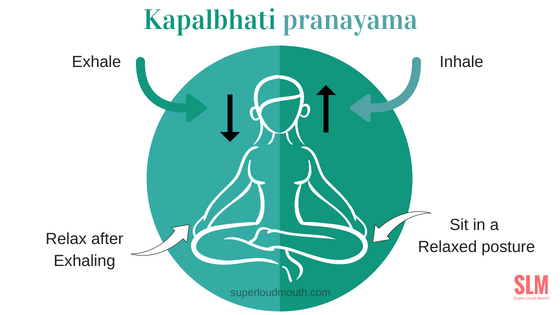
- Start with a clear nose. Wipe off all the snot or nasal mucus if you find any traces
- Find a comfortable place and sit in a relaxed posture or an easy posture. Keep your backbone straight as much as possible throughout the exercise. Also, close your eyes.
- Place your palms on the knees
- Ensure that you’re facing upwards
- Now, with a normal breath, inhale with both the nostrils and fill both lungs with air. This breath should be normal and calm.
- Begin the cycle with forceful exhalations by pulling your belly in and up as you breathe in and out.
- As you pull your stomach in towards your back, get your navel close to the spine
- Remember you should release the belly with short and normal inhalations
- As you exhale out feel that all the toxins in your body gush out
- Then come back to a normal posture by relaxing your body and muscles
- Continue for about 15 – 20 rounds
Preparation for kapalbhati pranayama
Why do you need to prepare for doing a three steps exercise? Is this the question which is startling you?
If yes, you should certainly know these following principles of kapalbhati pranayama because there are chances to go wrong with the exercise. Sometimes, you may also harm yourself if you are not doing right. [10]
Wondering how?
Well, “lacking awareness” is the biggest cause. For the reason that today there are not many instructors who can teach yoga scientifically. The reason might be ‘lack of interest among people as most of them are very much fascinated to hit the gyms these days rather than heading to yoga classes.
The second cause is “Fear”. Yes. You heard it right! Because without awareness of the principles and fundamentals of yoga many people try to attempt these exercises. Eventually, they will harm or hurt themselves.
This doesn’t mean that kapalbhati pranayama or any other yogic exercises are too hard to do. It’s just a matter of scientifical and smart acknowledgement. However, if it’s practised under an expert’s supervision you will surely experience amazing results. [11]
Setting up right conditions –
- You can practise kapalbhati alone when you reach a stable point
- You should follow a good diet plan which includes foods rich in nutrition, protein, fibre and vitamins
- Should practise kapalbhati in a fully ventilated airy room which is neither too hot nor too cool. In fact, your surrounding area should also soothe your mind and body.
- There should be no distractions going on in the area while practising kapalbhati
- Ensure to empty the bowels before starting off kapalbhati
- Clean both your nostrils without any traces of mucus or snot
- Relax your body and muscles (especially stomach muscles). So that you could take deep breathes freely.
- Try to keep your backbone erect throughout the kapalbhati pranayama coz it’s important to maintain a good posture
- Over and above, ensure that your upper portion of the body will not move i.e above diaphragm till you complete kapalbhati
- Concentration is essential. Don’t deviate or get distracted. Put your focus only on inhalations, exhalations and stomach movements.
Kapalbhati pranayama breathing benefits
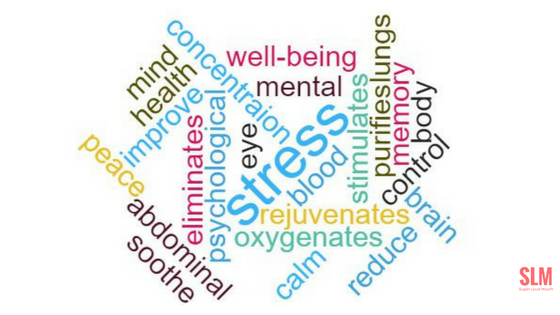
Kapalbhati has innumerable benefits based on its impeccable properties to soothe the mind and body. Let’s look into some of them,
- Kapalbhati purifies body, soul and mind. As the name suggests it calms down the body by keeping you awake and focused throughout the day. [12]
- This breathing exercise will improve your memory and concentration power
- It eliminates all the toxic impurities from the body when you forcefully exhale
- Kapalbhati improves the functioning of various organs of the body thereby getting rid of stale air
- It not only banish away health issues but also the skin issues. Kapalbhati is responsible for rejuvenating the body by giving a clear glow
- It reduces anxiety, stress and other pressures by calming your soul
- Kapalbhati promotes blood circulation [13]
- Enhances the skin texture to a hundredfold
- Kapalbhati gives instant relief from cold or sinus problem. You can breathe much easier after undergoing few sessions.
- Helps in oxygenating blood and stimulates the brain functions
- The respiration process involved in the kapalbhati process will increase the control over abdominal muscles
- Kapalbhati helps in cleaning various organs of the body like lungs, liver, respiratory system. So that you will not be affected by any allergies or illness. [14]
- Regular practice of kapalbhati will strengthen abdominal muscles and diaphragm
- Cures constipation, breast cancer, greying of hair, lung problems, kidney problems, hair loss, pimples, gastric and acidity problems.
- By practising kapalbhati pranayama, one can get a naturally radiant glow to body and face
- It also controls obesity, excess fats and overall weight
- Makes your soul and body feel energetic, refreshed and rejuvenated
- The complete breath will contract and stretches all respiratory muscles
This is not yet over. Practise kapalbhati exercise and you yourself jot down the benefits you gained by practising this exercise religiously.
Kapalbhati in weight loss
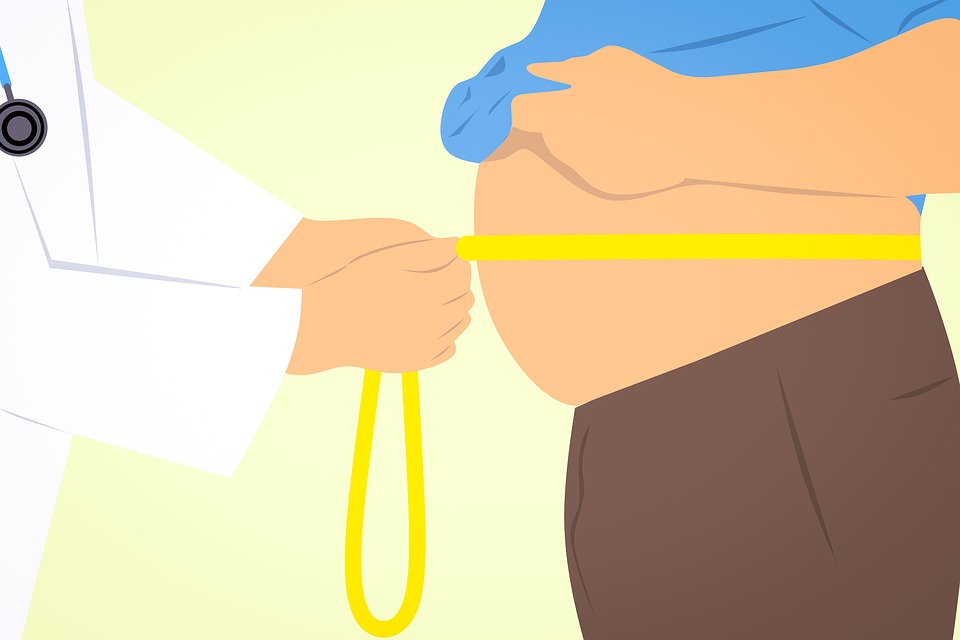
Apparently, you can lose weight by practising kapalbhati pranayama regularly. Yogic breathing exercises have a lot of potentials to reduce weight. What a workout, exercise equipment and weight loss techniques do to your body, kapalbhati or yogic breathing exercises will do the same.
What do you think? Is it a myth?
No, its thankfully not a myth. There are many studies which have proven that kapalbhati help in weight loss. Also, according to Baba Ramdev, thousands of people have lost weight who visit his Patanjali ashram. In a very short span of time, they had lost to 10 to 15 kgs with kapalbhati.
How can that be possible?
Deep breathing exercises will increase oxidation levels in your body. Breathing boosts up metabolism and oxygen intake in blood. This is an ideal reason why kapalbhati or breathing techniques helps in weight loss.
Side effects of kapalbhati pranayama
Though kapalbhati has many great properties, it also has got few side effects. Some of the reasons can be overdoing, following incorrect techniques and if you have any health issues. These inappropriate reasons can lead to side effects like,
- Forceful exhalations can cause a headache and dizziness
- You might get a vomiting sensation or nausea
- Digestion problems like constipation or diarrhoea
- Your mouth dries off
- You will observe more sweat and salvation
- You will notice a variation in blood pressure and glucose levels
- Body or backaches are quite common if you go wrong with kapalbhati
- If you overburden your circulatory system by overdoing kapalbhati, it leads to hypertension, hernia and heart problems
Is kapalbhati pranayama dangerous?
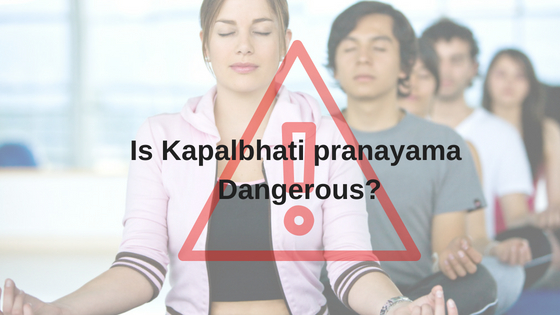
Probably after knowing the side effects, you might go nuts and start thinking ‘is it dangerous to go with kapalbhati technique’. If yes, you’re going to fall on a wrong track.
Kapalbhati pranayama is harmful to you only when you follow inappropriate methods unscientifically and when you’re not taking advice from experts despite being a beginner.
Kapalbhati is not dangerous unless you’re exhaling too forcefully to drive out the air. Furthermore, in breathing exercises, if you retain breathe for more than 2 minutes it can lead to some side effects. Whereas in kapalbhati technique there’s no chance of breath retaining.
So, what’s the worry?
Unless you do the exercise with smartness by following your body signals kapalbhati is not dangerous. Also, you should remember always not to exhale too forcefully and overdo this exercise. That may lead to serious lung or heart diseases. [15]
Precautions while doing kapalbhati
- Kapalbhati should not be practised by pregnant or menstruating women
- You can do this exercise at any point in time until evening but not beyond evenings
- Don’t set high targets like doing more than 100 breathes a day. As you get steady increase your targets
- Don’t rush and don’t exhale too fast. Be slow and steady.
- Heart patients should not exhale rapidly or faster
- If you’re a beginner initially get trained from an expert who preaches scientific approaches
- Ensure that you do kapalbhati on an empty stomach and empty bowels
- If you have high blood pressure don’t opt for these breathing exercises
- Make sure about the body signals, if you get any side effects stop the approach
- People with any health issues like a hernia, heart and gastric problems take an advice from your doctor before continuing with kapalbhati
- Do this exercise after 4-5 hours of eating
- If you can’t breathe, you become dizzy or anxious stop the exercise immediately
There’s too much pressure to overcome to calm down and become healthy in these contemporary days. The best ways to attain positive results is by practising breathing exercises like kapalbhati pranayama. It’s the natural way to heal and get rid of stress, tensions, health issues and anything. So, why not give it a try?
Do try kapalbhati pranayama and let us know your experiences with this breathing exercise.
Also Read:
- What is Tadasana and what are its benefits?
- Best Exercises to Reduce Belly Fat
- Epic Formula to loose Belly Fat
- Perfect Diet Plan for Healthy body
- 12 Healthy Habits for Glowing Skin

